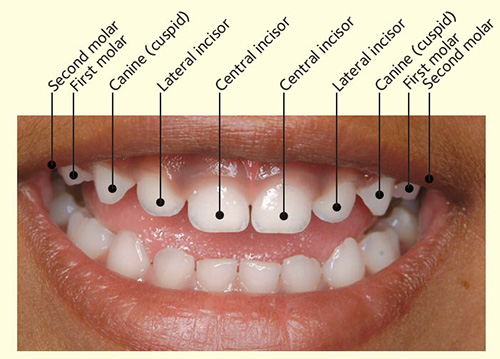Baby Teeth: When They Come In, When They Fall Out
A healthy mouth is part of a child's overall health. Children need strong, healthy teeth to chew their food, speak and smile. Your child's teeth also help give his or her face its shape.
A baby's teeth start to come in (erupt) when the baby is about six months old. Baby teeth will later be lost (shed) one by one. This makes space for adult (permanent) teeth. By the age of 21, a person usually has all of his or her adult teeth.
Adult teeth start to form under the baby teeth. After the baby teeth are shed, the adult teeth will erupt through the gums.
If your child has healthy baby teeth, there is a good chance he or she will have healthy teeth as an adult. That is why it is important to teach children good oral care habits early.
The charts below tell the names of baby (primary) and adult (permanent) teeth. The pictures show when each tooth usually erupts and is shed. However, not all children get the same teeth at the same times. Your child's teeth may erupt earlier or later than these charts.
Most children have a stage when they have a mix of primary and permanent teeth. During this time the smile can look uneven, with some big teeth, some small teeth or maybe even some missing teeth, but try not to worry. Things often even out once all the permanent teeth are in place.
When your child is around age 7, your dentist will check your child's adult upper and lower back teeth to see how they work together (a "bite check"). If your child's teeth or bite need treatment, it's best to get an early start.
![]()
Patient education content ©2014 American Dental Association. All rights
reserved. “ADA” and the “ADA” Logo are registered trademarks of the American
Dental Association.
Contact Us
Shiva G. Rad, D.D.S. is located at 3055 Plymouth Rd Suite 100 Ann Arbor, MI 48105.









